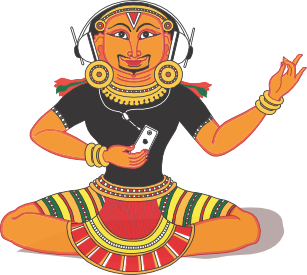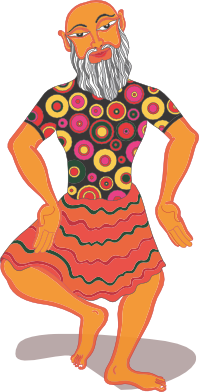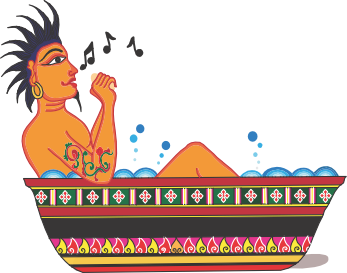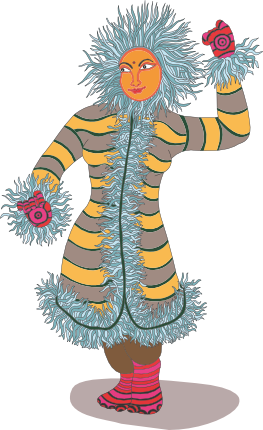




S. Kalyanaraman (6 February 1930 – 9 January 1994), popularly known as SKR, was a legendary vocalist in the Carnatic tradition. Hailing from a famed musical family, where his great-grandfather was Komal Muthu Bhagavathar and his grand uncle was the celebrated vocalist Madirimangalam Natesa Iyer, S.Kalyanaraman became one of the foremost disciples of G. N. Balasubramaniam and established himself as an original musician in his own right.
Early life and background
Career
So versatile was his voice that even before his debut in 1949, Kalyanaraman was already getting attention from the audience as a leading vocal accompanist to GNB. At times, realizing the rich manodharma of Kalyanaraman’s musical intuition, GNB would hand him the reins for improvisations in his own concerts. The brief moments of Kalyanaraman’s music captivated the audience who came to listen to GNB.
At his debut in the Gokhale Hall in 1949, guru GNB was in the audience and was carried away in musical wonder for Kalyanaraman’s originality while retaining the mesmerizing bani of his own. GNB further added “The best respect to a guru is to follow his style in total. The best tribute to a guru is to embellish a style of your own. My dear boy… I am proud you are… indeed your own.” Once while listening to Kalyanaraman’s rendition of Nilayam Onru Enukku Arulvai, a Suddhananda Bharathi composition, GNB walked up to Kalyanaraman and demanded “Teach me this and give me the notation.” So vast was his musical acumen and knowledge that G.B. Duraiswamy (the eldest of GNB sons) used to remark “the way he discussed intellectual queries and doubts with GNB was a treat to watch.”
From then, S. Kalyanaraman’s rise in Carnatic music was phenomenal. Like his guru, he emphasized on artistic individuality and won acclaim as a great artiste in his own right. His musical acumen transcended Carnatic music and when performing with [Hindustani] musicians, he would sing aptly with the Hindustani touch when rendering Hindustani ragas. Such was his admiration of Indian music, that he saw more similarities than differences in both Carnatic & Hindustani systems. He would go on to explain the gamaka technique in Carnatic music which most Hindustani musicians criticize as being detrimental to shruthi clarity. His climb to the ‘A’ Top rank in All-India-Radio (AIR) was meteoric. In his later years, Kalyanaraman gave some whistle concerts whistling away compositions of the Trinity, an art that he learnt with passion.
Style
However, Kalyanaraman didn’t completely ignore the legacy of his guru to forge that of his own, he popularized the GNB bani (style) of singing and also immortalized his guru’s hallmark ragas likeShanmukhapriya, Kalyani, Dheerasankarabharanam, Kapi Narayani and many more. He gave Hindustani touches to Hindustani ragas like Dwijawanthi, Brindavana Saranga and Hamir Kalyani. Such was his voice that it had an almost perfect substitute to the inimitable voice of GNB and while singing his guru’s signature compositions it would often confuse the acute listener whether it is GNB singing or Kalyanaraman singing.
Contributions
As a musical innovator he faced much criticism in his time for creating new ragas such as the dwi-madhyama ragas in which he eschewed the panchama of the first 36 mela ragas substituting it with the prathi-madhyama. Apart from theoretically creating a new set of 36 of his ragas, he demonstrated them at a lecture held in the Music Academy in 1993. He was also ridiculed by critics that he would only handle the “rare stuff” of Carnatic music. But nothing bothered his style and preference. He also composed several varnams, krithis (some in ashtaragamalika format) and thillanas in both popular and vivadi ragas and like his guru, he refrained from using a mudra.
He was a strict teacher and expected nothing less than devotion to the art from his students. As such, many of his students, unable to understand his teaching methods, left him. He would also take a back seat and analyze his teaching methods whether anything went wrong in his teaching. Noted among his disciples are Bhushany Kalyanaraman, (his own wife), Prof.Gowri Kuppuswamy, Brinda Venkataraman and the popular cine playback singer, Anuradha Sriram.
Above all, he emphasized a lot on shruthi clarity which he felt Carnatic musicians lacked unlike their Hindustani counterparts. He formulated and tested methods to improve shruthi clarity in Carnatic musicians as well as some of his innovative teaching methods. He planned for the release of a book of all his findings, but it was never published.
Influence
The SKR Trust, established by his wife and student promotes his music and his legacy. A documentary of his life and work, has been released by Kalakendra Sanskriti Series “The Sunaadha Vinodhan” in an audio visual DVD format.
Our Resource person’s observations…..
It was only much later, that I bumped into the soft kernel of TSK’s singing in his prime, in the form of recordings with friends. In fact these friends would boast of having watched from the sidelines, the likes of TSK-MSG – Karaikudi Mani going through their Sadhanas of Asura proportions – sometimes in all night sessions.
“Make it a point to listen to as much as possible of him and Balchander. …..very Brainy artists. Did not get what they deserved…….”